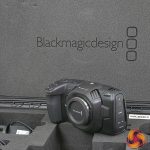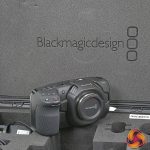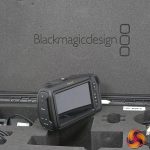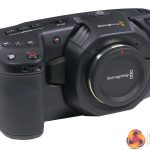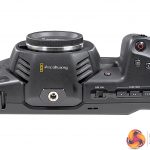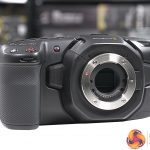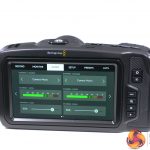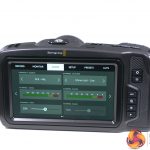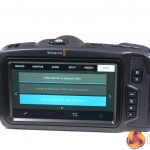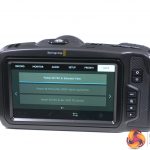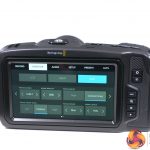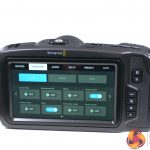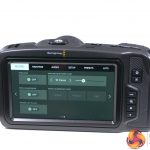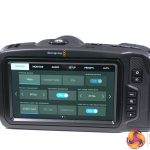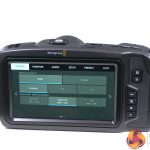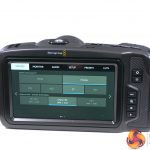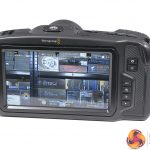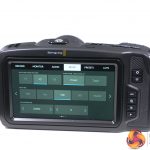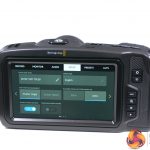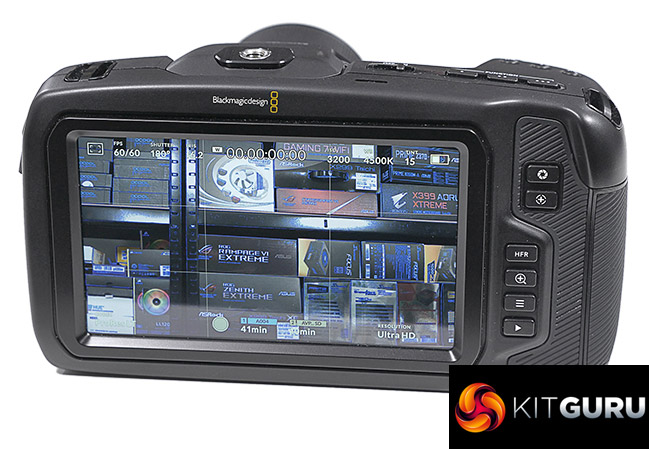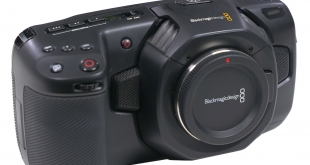
Blackmagic made some enormous promises when it announced the Pocket Cinema Camera 4K with a combination of features that seemed almost too good to be true. The headline feature is 4K 60fps recording in a body that looks vaguely similar to the original Pocket Cinema Camera. The original BMPCC was limited to Full HD recording so it comes as no surprise the new Pocket Cinema Camera 4K is slightly more bulky in the hand.
The main draw for new customers is likely to be the absurdly low price. We have found any number of outlets offering the BMPCC 4K body for around £1,200 which surely makes it the cheapest camera body on the market that offers 4k 60fps recording allied to a proper lens mount.
Note: if the above images are not displaying properly, you may need to disable Ad Block as it is known to interfere with our display code
Key features of Blackmagic Pocket Cinema Camera 4K
- Full size 4/3 sized sensor with native 4096 x 2160 resolution sized sensor.
- Compatible with extremely high quality Micro Four Thirds lenses.
- Super wide 13 stops of dynamic range allows capture for high end feature film look.
- Up to 25600 ISO for incredible low light performance.
- Carbon fibre polycarbonate composite body which makes it lightweight, portable and durable.
- Multi function grip for quick access to recording start/stop, still photos, ISO, shutter, aperture, white balance, power and more.
- Built in SD, UHS-II and CFast card recorders.
- USB-C expansion port allows longer duration recording directly to an external SSD or flash disk.
- Standard open file formats compatible with popular NLE software such as 10-bit ProRes and 12 bit RAW.
- Features full size HDMI output for monitoring with camera status graphic overlay.
- Professional mini XLR input with 48 volts of phantom power for connecting to pro microphones.
- 3.5mm audio jack, headphone jack, and locking DC 12 volt power connection.
- Built in 5” LCD touchscreen allows accurate focus when shooting 4K.
- LCD supports on screen overlays including status, histogram, focus peaking, and transport controls.
- Records 4K images at up to 60 frames per second and windowed HD at up to 120 frames per second.
- 3D LUTs can be applied for both monitoring and recording.
- Blackmagic OS as used in URSA Mini and URSA Broadcast cameras.
- 4th generation Blackmagic colour science.
- Supports remote camera control via Bluetooth.
- Includes full license for DaVinci Resolve Studio editing, color, visual effects and audio post production.
Full specification HERE.
Throughout our video we compared the BMPCC 4K with our daily driver Panasonic GH5. Both cameras use Micro Four Thirds (MFT) lens mounts, which meant we could swap lenses between the cameras to maintain a level playing field. In addition the two camera bodies cost a similar amount, although if you factor in the XLR connection provided by Blackmagic you could argue the BMPCC 4K saves you around £500.
While the two cameras have a certain amount in common we found the user experience was dramatically different. You navigate menus on BMPCC 4K using a massive 5-inch touch screen and the fact that the camera is dedicated to video work, rather than photos, changes its behaviour significantly.
We are sure that part of the difference is due to the dual native ISO 400 and 3,200 with the changeover at 1,250 and a maximum setting of 25,600. Anyone who has used a Panasonic MFT camera for video knows you start at ISO 800 and don’t dare go much higher than 1600, which can be severely limiting in low light.
The BMPCC could be used under a wider range of lighting conditions but balanced against that we found the white balance was quite peculiar. For example when we were working under 5500K lights and set the white balance to 5500K the image was practically sepia. There is an Auto White Balance function that delivers strange results so at every step of the way we selected a white balance setting that seemed correct by eye.
This looks like a classic example where you are meant to fix it in Post, preferably using DaVinci Resolve, however we much prefer the footage to look correct right out of the camera. On that subject, the set-up offers three distinct Dynamic Range settings. We ignored Film as we didn’t want to work with Log and after a trial run with the Extended Video setting (Rec709 colour space and Log gamma) we switched to Video which is Rec709.
When it comes to the flickering that we suffered under certain LED house lights, we did indeed try the 50Hz/60Hz setting and it made no difference to the result.
Beyond that the experience of using the BMPCC 4K was very interesting and the video we shot looked good. It was quite an eye-opener to see the sizes of the files we created as ProRes LT generates files fully 6x larger than the files that come out of the GH5. You can be sure you will burn through storage media with the BMPCC 4K and will also have to keep an eye on the condition of your battery as you are unlikely to make a Canon LP-E6 last a full hour.
Closing Thoughts
Blackmagic Pocket Cinema Camera 4K is an impressive camera that packs 4K 60fps recording into a small body. It is worth emphasising the body is not as small as you might expect as it seems the word ‘Pocket’ means something different in Blackmagic-speak.
Once you get beyond that minor point you will see the BMPCC 4K comes with plenty of features: dual media slots for CFast 2.0 and SD card, a USB-C that can be used to connect a flash disk, dual native ISO, 13 stops of dynamic range, four built-in microphones, an XLR input with Phantom power and a massive 5-inch LCD touch screen.
That’s a lot of hardware for a very low price.
The big question is whether the BMPCC 4K fits your way of working. For example, if you work alone the fixed 5-inch screen is a limitation, but even if you work in a team you would doubtless find a tilting screen would make life easier when you raise or lower the camera. We found it frustrating that the Blackmagic Camera Control App is aimed at iPad users and ignores the Android user base.
The BMPCC 4K is ready to be rigged to suit your working environment, perhaps by adding a monitor, connecting mains power or hooking up external storage. That latter point is especially significant if you are shooting in RAW as you will need plenty of storage. We have no problem with customising your set-up to make the camera work exactly the way you want but the issue is that BMPCC 4K is very cheap and can be paired with a low cost lens, such as the Panasonic Lumix G 25mm f/1.7.
You might argue that leaves you plenty of budget to buy a cage, handle, monitor, storage or batteries and in a sense you are correct. On the other hand we feel the sort of customer who is drawn to a camera by its low price is the least likely to shell out extra cash on accessories.
Having said all that, there is a significant difference between people who use cameras to take photos and people who make videos. When KitGuru started to push the video side of our reviews, your reviewer discovered that decent audio can add considerable complexity and cost to a camera such as Panasonic GH4 or GH5. The dividing line here is whether you consider the single mini jack you find on most DSLRs to be sufficient or whether you expect to use an XLR connection.
Even here we have nuanced feelings as it is clearly good news that BMPCC 4K includes an XLR with Phantom power, however it would be better to have dual inputs or the option of recording dual audio tracks where the second track is -12dBA as a back-up.
Our point is that Blackmagic has taken an endless series of decisions to arrive at the specification of the Pocket Cinema Camera 4K and the end result is a camera that suits a specific type of user.
Clearly it helps if you have bought into the Blackmagic view of the world and are immersed in DaVinci Resolve. You may well feel the point-and-shoot DSLR approach is too basic and instead want to shoot in RAW or Log with a LUT on the camera.
In our video we highlight the use case of a student or budding cinematographer who is willing to put in the hours and the effort to get the results they desire. For those individuals we consider the Blackmagic Pocket Cinema Camera 4K to be an absolute jewel.
You can buy the BMPCC 4K for £1134 (body only) from Wex HERE.
Pros:
- Very low price for a 4K 60fps camera.
- Dual native ISO 400 and 3200.
- Four built in microphones plus XLR with Phantom power.
- Huge 5-inch LCD touch screen.
- Dual slots for CFast 2.0 and SD cards plus USB-C flash disk.
Cons:
- White balance behaves in a peculiar way.
- 5-inch LCD touch screen has no movement.
- Build quality feels plasticky.
- You need to watch battery life carefully.
- ProRes LT File sizes are six times larger than GH5 files. RAW files are huge.
KitGuru says: You have to work to get the best from the BMPCC 4K but the results are worth the effort.
Be sure to check out our sponsors store EKWB here
 KitGuru KitGuru.net – Tech News | Hardware News | Hardware Reviews | IOS | Mobile | Gaming | Graphics Cards
KitGuru KitGuru.net – Tech News | Hardware News | Hardware Reviews | IOS | Mobile | Gaming | Graphics Cards



